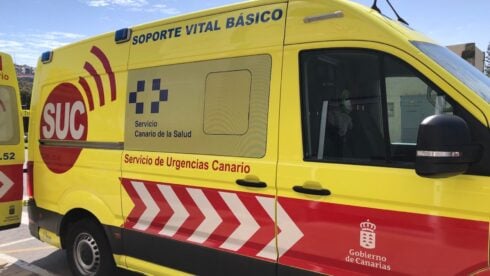A SUBMARINE robot studying the impact of the volcanic eruption on marine life has sent back some extraordinary footage of the seabed.
Lava flow from the Cumbre Veija volcanic ridge that began erupting on September 19 reached the sea nine days later and has created a lava delta covering 36 hectares at the Playa Los Guirres, in Tazacorte on the southwest of the island.
It has entirely changed the surface of the seabed, confirmed the CSIC and Spain’s Institute of Oceanography which released images of their first probe beneath the surface.
Images recorded by the ROV Liropus 2000 underwater vehicle, which went to a depth of more 100 metres, showed a layer of ash from the volcano eruptions covering marine life on the seabed.
A hermit crab covered in a layer of ash was pictured struggling through the thick layer that had accumulated on the ocean bed.
A tweet with footage showing the robot at work reported that the lava had created an entirely new surface beneath the waves with “pillows, tubes, corrugations, polygonal cracks and clastites”.
Volcanic experts say there is no sign that the eruption is easing off and close to finishing.
More than 7,000 people have been evacuated from their homes as lava destroyed 1,956 buildings by Monday morning and covered over 812 hectares.
READ ALSO:
- WATCH: Tsunami of lava flows from La Palma volcano
- VIDEO: Watch rivers of lava carry huge boulders from Spain’s La Palma volcano as experts warn no sign of eruption
Click here to read more Canary Islands News from The Olive Press.








